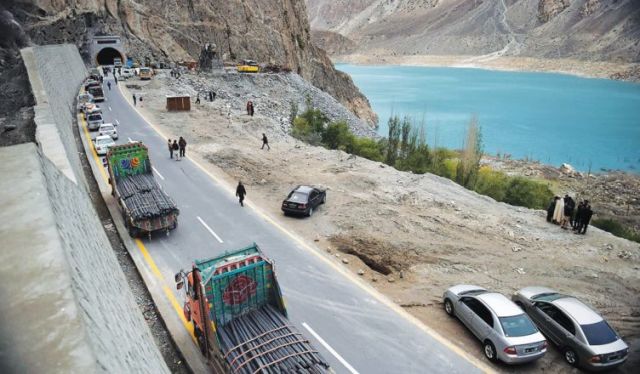
by admin | May 25, 2021 | Business, Economy, Emerging Businesses, Large Enterprise, Markets, Medium Enterprise, News, Politics, SMEs
 By Ranjana Narayan,
By Ranjana Narayan,
New Delhi : As India prepares to celebrate the silver jubilee of its partnership with ASEAN in a big way, a key border trade link with Myanmar, the closest neighbour of the vibrant Southeast Asian bloc, continues to be hobbled by infrastructure and other issues — 22 years after it was launched.
India’s border trade with Myanmar takes place mainly through Moreh, in Manipur’s Chandel district, which links with Tamu, located in Sagaing in northwest Myanmar. There is another border trade point through Zowkhathar in Mizoram with the corresponding point Rhi in Myanmar, but Moreh is the biggest border trade point.
Though India and Myanmar signed the border trade agreement on January 21, 1994, and it was made operational the following year, the bilateral border trade figure stands at $50 million — a poor comparison to Myanmar’s trade with China, which was around $6 billion last year.
Myanmar has four border trading points with China, of which the one at Muse, in northern Shan state, is the biggest. Around 80 per cent of Myanmar’s formal overland trade with China passes through this post that links with Ruili, in China’s Yunnan province.
While China has pumped in massive amounts of money to build modern infrastructure at Ruili and also in Yunnan province to boost connectivity with Myanmar, the infrastructure at the India-Myanmar border post, Moreh, is still inadequate. An Integrated Check Post (ICP) at Moreh has been in the works for the past 10 years and is yet to be completed.
Besides the difficult terrain and militancy that adversely affect border trade at Moreh-Tamu, India in December 2015 officially put an end to the barter system, or trading of goods without exchange of money. According to Myanmarese media reports, the ending of barter trade “killed” India-Myanmar border trade.
Professor Priyoranjan Singh, an economist at Manipur University, says that since the Government of India notification ending barter trade, “the present state is that formal trade, or normal official trade, stands at zero, and informal, or illegal trade — or head load trade — is going on”.
He told IANS that there was a “huge information gap” between the two sides, including among the traders. “Our own Indian customs agency does not know the customs duty that Myanmar imposes on Indian goods,” he said.
Singh, who has expertise in the field, feels that “seriousness is not there” in India on boosting border trade, while China exhibits “huge seriousness, which is something Myanmar likes”.
Gautam Mukhopadhyay, former Indian envoy to Myanmar, says there are reasons for China’s border trade with Myanmar being more robust than India.
“First, Yunnan is a much better connected and more productive gateway from China to Myanmar than the Northeast of India to Myanmar. Secondly, for any Northeastern state of India to match China in cross-border trade, the region has to become a net producer than consumer, and better connected to the main productive regions of India,” Mukhopadhyay said.
He said efforts were being made in that direction. “But it will take some time and better coordination between our development, commercial and strategic policies for us to match China.”
He said the government has tried to address the issue of low volumes by liberalising cross-border trade and moving to the Most Favoured Nation trade status, but there was a “need for a reliable system to determine countries of origin of goods”. A lot of goods from China are available in the markets in the region.
Economist Ram Upendra Das, head of the Centre for Regional Trade, an autonomous institute under the Commerce Ministry, in his report on ‘Enhancing India-Myanmar border trade’ released last year by the ministry, says: “A major cause of discontent among local traders is that the pace of construction of Moreh ICP is very slow.”
Das told IANS that “it is very important that border trade is conducted through formal channels”, which would help increase the volume as India has slashed the tariff in a majority of items to zero, which means no border tax.
“There is an information gap and lack of understanding among the traders” on the benefits of conducting trade through the formal channel, he said. Informal trade would also give rise to corruption, in the form of levy imposed by militant groups and bribes, he added.
On China developing the infrastructure in Myanmar, Mukhopadhyay says: “China has made huge investments into power and extractive industries for its own interests, but very little into employment-intensive industries that really benefit Myanmar. China has been able to convert its more selfish investments into greater political clout than India. This is something we need to think about.”
(Ranjana Narayan can be contacted at ranjana.n@ians.in)
—IANS
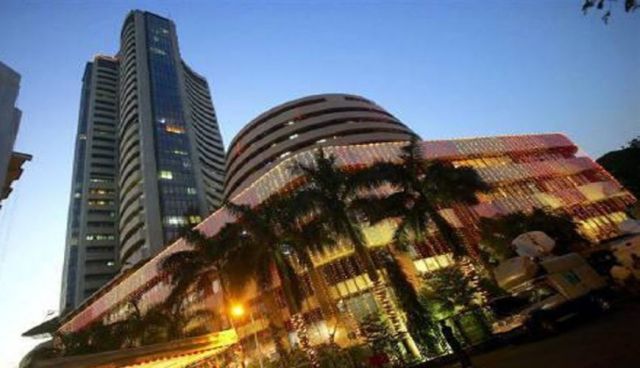
by admin | May 25, 2021 | Economy, Markets, News
 Mumbai : After trading on a tepid note for the entire day, the key Indian equity indices on Thursday closed a rangebound trade session in the red as weak global cues, along with heavy selling in auto stocks, kept investors’ sentiments subdued.
Mumbai : After trading on a tepid note for the entire day, the key Indian equity indices on Thursday closed a rangebound trade session in the red as weak global cues, along with heavy selling in auto stocks, kept investors’ sentiments subdued.
According to market observers, the sentiment in the market was weak after the release of minutes of the Reserve Bank of India’s (RBI) latest monetary policy meeting on Wednesday where sharp warnings on inflation trend were issued.
However, following the day’s development, telecom stocks like Reliance Communications (up 4.05 per cent) and Idea Cellular (up 3.37 per cent) closed higher after a Delhi court acquitted all the accused in the alleged multi-thousand crore rupee 2G spectrum scandal.
On a closing basis, the wider Nifty50 of the National Stock Exchange (NSE) inched lower by 3.90 points or 0.04 per cent to 10,440.30 points.
The barometer 30-scrip Sensitive Index (Sensex) of the BSE closed at 33,756.28 points — down 21.10 points or 0.06 per cent — from its previous close.
In contrast, the BSE market breadth remained bullish as 1,689 stocks advanced as compared to 1,030 declines.
“Markets ended lower on Thursday for the second consecutive session after a range-bound session of trade. Global cues too were subdued,” Deepak Jasani, Head, Retail Research, HDFC Securities, told IANS.
“Technically, the Nifty seems to be in consolidation mode after the recent rise. Further, directional cues are likely to emerge on a move beyond the 10,410-10,495 trading range,” Jasani added.
In the broader markets, the S&P BSE mid-cap index was up by 0.77 per cent and the small-cap index by 1.11 per cent.
On the currency front, the Indian rupee strengthened by 5-6 paise to close at 64.05-06 against the US dollar from its previous close at 64.11.
Provisional data with the exchanges showed that foreign institutional investors sold scrips valued at Rs 383.99 crore while domestic institutional investors purchased stocks valued at Rs 1,574.30 crore.
Vinod Nair, Head of Research, Geojit Financial Services, said: “Market showed signs of consolidation due to lack of fresh triggers to cross the next resistance while RBI’s cautious view on slow pace in economic recovery and inflation impacted the sentiment.”
“Construction companies rallied owing to expectation of improvement in execution in H2FY18 and growth in order booking led by governments program to boost infrastructure growth,” he added.
Sector-wise, the BSE S&P auto index declined by 203.68 points, followed by banking index by 75.19 points and oil and gas index by 22.88 points.
On the other hand, the S&P BSE capital goods index rose by 266.25 points, healthcare index by 109.06 points and metal index by 96 points.
Major Sensex gainers on Thursday were: Larsen and Toubro, up 1.92 per cent at Rs 1,253.80; Tata Steel, up 1.84 per cent at Rs 715.50; Hero MotoCorp, up 1.45 per cent at Rs 3,795; NTPC, up 0.90 per cent at Rs 180.15; and Infosys, up 0.81 per cent at Rs 1,021.55.
Major Sensex losers were: Mahindra and Mahindra, down 3.74 per cent at Rs 742.10; Maruti Suzuki, down 1.11 per cent at Rs 9,629.15; Hindustan Unilever, down 1.09 per cent at Rs 1,346.50; Bajaj Auto, down 1.08 per cent at Rs 3,265.45; and Axis Bank, down 0.99 per cent at Rs 549.40.
—IANS
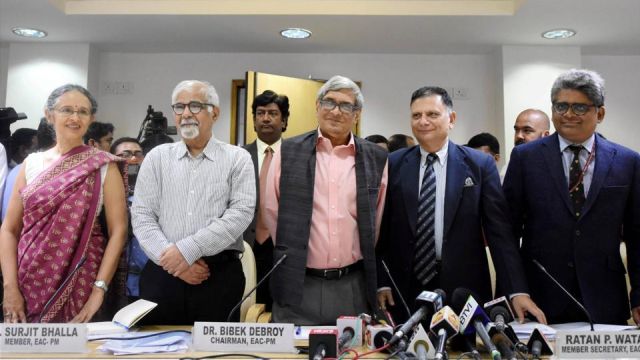
by admin | May 25, 2021 | Corporate, Corporate Governance, Corporate Jobs, Employment, Government Jobs

Economic Advisory Council to the Prime Minister (EAC-PM)
New Delhi : The Economic Advisory Council to the Prime Minister (EAC-PM) continued deliberations on employment generation and boosting economic growth during its third meeting on Wednesday.
Taking forward the agenda of the last meeting held in November — when it chalked out a road map for stepping up skill development and job creation in the social sector — the Council, headed by NITI Aayog Member Bibek Debroy, focused on growth in agriculture and rural sectors this time around.
During the meeting, NITI Aayog Member Ramesh Chand made out a case for enhancing agricultural productivity, income and pro-employment growth in agriculture and allied sectors, a statement said.
Rural Development Secretary Amarjeet Sinha made a presentation on “Mission Antyodaya for Poverty Free Panchayats”.
Rathin Roy and Surjit Bhalla, both part-time members of the Council, presented an update on the “Economy Track Monitor” which strives to link economic growth indicators with social indicators.
The Council had, in the last meeting, stressed on the need to link the two and said it was evolving the design for a new “economy tracking monitor” to do that.
During the meeting, Officer on Special Duty in the EAC-PM Kishore Desai also made a presentation on trade related issues.
—IANS
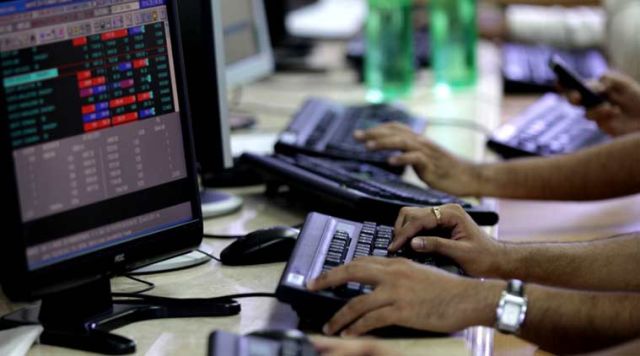
by admin | May 25, 2021 | Economy, Markets, News
 Mumbai : Negative European indices, coupled with heavy selling pressure in banking and auto stocks, pulled the key Indian equity indices lower on Wednesday.
Mumbai : Negative European indices, coupled with heavy selling pressure in banking and auto stocks, pulled the key Indian equity indices lower on Wednesday.
The equity indices recorded fresh intra-day high levels before giving up gains to provisionally close in the red.
On an intra-day basis, the barometer 30-scrip Sensitive Index (Sensex) of the BSE touched a record high level of 33,956.31 points, surpassing its previous high of 33,865.95 points recorded on November 7.
The BSE Sensex provisionally closed (at 3.30 p.m.) at 33,777.38 points — down 59.36 points or 0.18 per cent — from its previous close.
However, the BSE market breadth was bullish as 1,585 stocks advanced as compared to 1,122 declines.
The wider Nifty50 of the National Stock Exchange (NSE) provisionally closed lower by 19 points or 0.18 per cent at 10,444.20 points.
During the day’s trade, the NSE Nifty50 edged higher to a new intra-day level of 10,494.45 points, crossing its previous intra-day high of 10,490.45 points scaled on November 6.
Dr. Reddy’s Lab, Bharti Airtel, Mahindra and Mahindra, Tata Steel and HDFC were the top losers on the BSE.
On Tuesday, the benchmark equity indices closed at new highs as sentiments were given a boost by soaring automobile stocks, along with a strengthened rupee.
On a closing basis, the BSE Sensex scaled a new high of 33,836.74 points — up 235.06 points or 0.70 per cent from its previous close, while the NSE Nifty50 edged higher by 74.45 points or 0.72 per cent to a new closing high 10,463.20 points.
—IANS
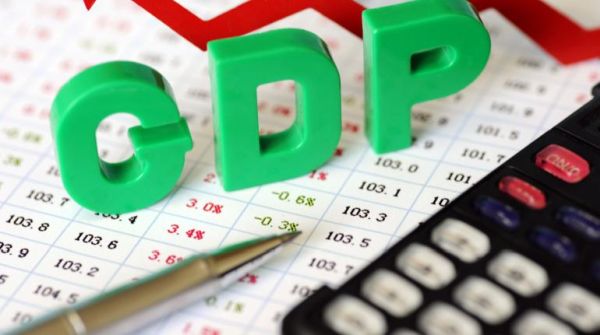
by admin | May 25, 2021 | Opinions
 By Amit Kapoor,
By Amit Kapoor,
The Indian telecom industry is passing through complex times. It has been almost two decades since the Atal Bihari Vajpayee government heralded the telecom revolution with the formulation of the National Telecom Policy (NTP) in 1999. When the policy was enforced, India merely had a million subscribers. Since then, the industry has grown on to become the second-largest telecommunications market in the world that is now well past the billion-mark in terms of subscribers.
Over the years, the sector has become a significant contributor of the country’s GDP and job growth. According to one estimate, it contributed 6.5 per cent of India’s GDP while providing direct and indirect employment to four million people in 2015. The industry has also been one of the fastest-growing sectors in the country with a compound annual growth rate (CAGR) of 7.3 percent over the last decade. This is the result of the dynamic and hyper-competitive nature of the Indian telecom market. Competition among telecom companies has risen to the extent that tariffs are one of the lowest in the world.
However, the pace of transformation of the industry over the course of last year has been astonishing, even by its own standards. It all began in September 2016 with the entry of Reliance Jio into the telecom fray that was already saturated with giants such as Bharti Airtel, Vodafone India, Idea Cellular and BSNL, along with other smaller players. Until then, the industry had derived 75 percent of its revenue from voice and as each operator tried to gain a market share by offering competitive prices, it seemed to have bottomed out reaching as low as $0.01 per minute.
Jio’s entry last year changed the market in more than one way. First, the battle shifted from voice to the data front. Reliance had spent the last few years building the largest LTE (long term evolution) network in the country that allowed it to provide Voice over LTE services at virtually no extra cost — enabling it to offer free calling and only charge for data.
The second significant impact of Jio’s entry has been a consolidation wave that has swept the industry due to escalated levels of competition. This has been so intense that scale has become a necessary prerequisite. In fact, to quantify the increase in market concentration, we calculated the Herfindahl-Hirschman Index (HHI) for the telecom market before and after the entry of Jio using TRAI data.
In a scale of 0 to 10,000 with a higher score implying higher concentration, we found that HHI increased by almost 1,000 points from 1,543 to 2,490 between June 2016 and June 2017. To put matters in perspective, the US Department of Justice considers a market with a HHI of less than 1,500 to be competitive, one between 1,500 and 2,500 to be moderately concentrated and one beyond 2,500 to be highly concentrated.
This rise in HHI has been a result of a spate of mergers that have taken place since Jio’s entry. Bharti Airtel has acquired the telecommunication services of Tata, Telenor and Videocon, while Vodafone is in its final stages of merger talks with Idea. After the merger, Airtel will lose its two-decade-long held position as the industry leader since the Vodafone-Idea combine will command a subscriber base of 400 million as compared to Airtel’s 320 million. At last count, Jio’s subscriber base stood at 138.6 million in September 2017. Considering that it had started from scratch a year ago, the figure is simply gargantuan and presents the incumbents with effective competition and takes the industry towards maturity.
The final impact of Jio’s entry, which is often less talked about, is in its effect on increasing mobile and data accessibility. The Indian telecom industry was adding an average of 54 million wireless and 50 million Internet subscribers each year until mid-2016, as per TRAI (April-June) reports. In contrast, over the course of the last year (June 2016-June 2017), the industry added over 150 million wireless and 80 million Internet subscribers. Jio’s entry in September 2016 has had a clear effect on the acceleration in adoption of mobile technology and, especially, Internet.
An ICRIER study recently pointed out that a 10 percent increase in the rate of growth of Internet subscribers will result in a 2.4 percent increase in the GDP rate. Therefore, there will be clear economic gains from the industry developments that have recently taken place.
India’s telecom revolution has been the driving force of the economy since the turn of the century and it has done well to evolve with the times and climb the data bandwagon. It has largely gone unnoticed, but this year India has also become the highest mobile data user in the world with monthly usage exceeding a billion GB. As data accessibility of Indian consumers increases, it creates a multitude of opportunities for the government to reach out and enable social progress by providing services that were previously not feasible. Tapping into these opportunities can unlock the next phase of growth for the Indian economy.
(Dr. Amit Kapoor is chair, Institute for Competitiveness. The views expressed are personal. He can be contacted at amit.kapoor@competitiveness.in and tweets @kautiliya. Chirag Yadav, senior researcher, Institute for Competitiveness, has contributed to the article)
—IANS





